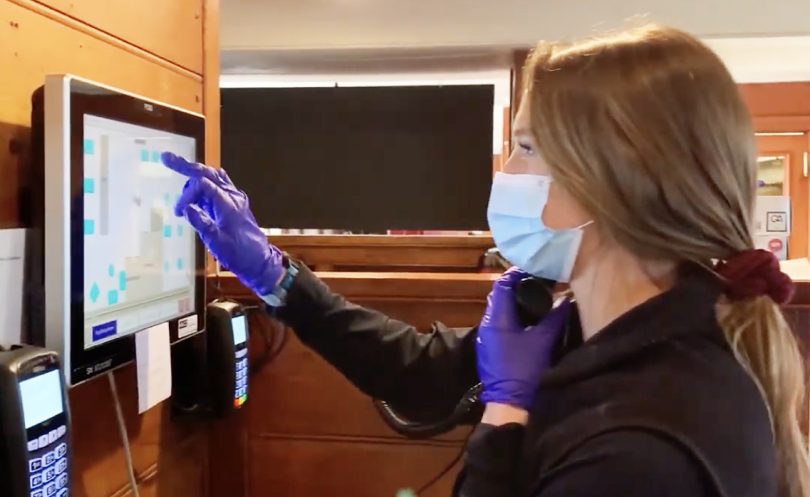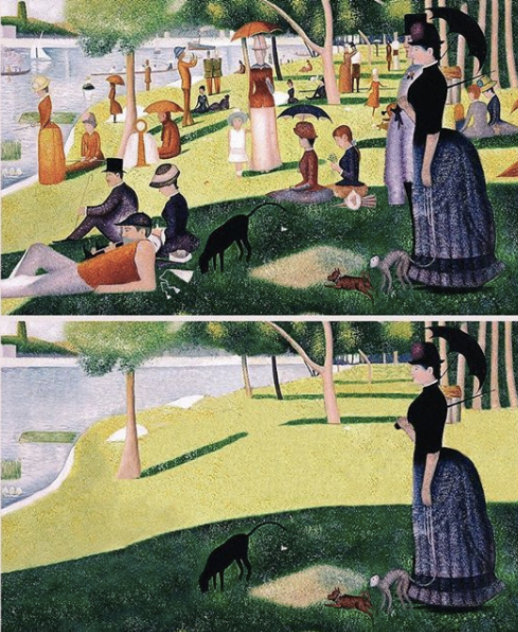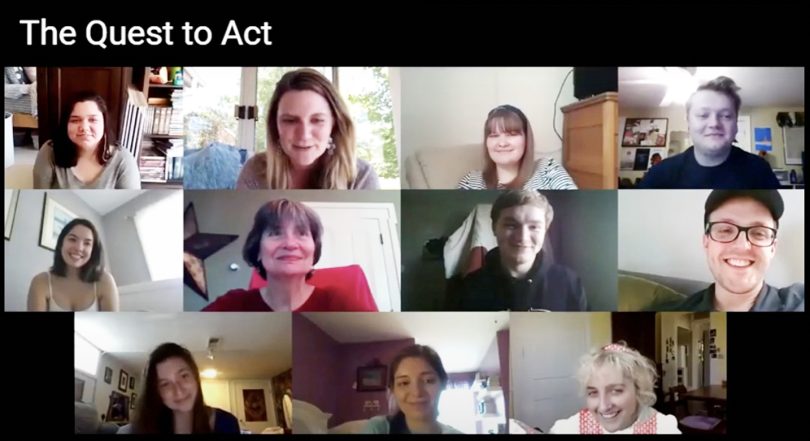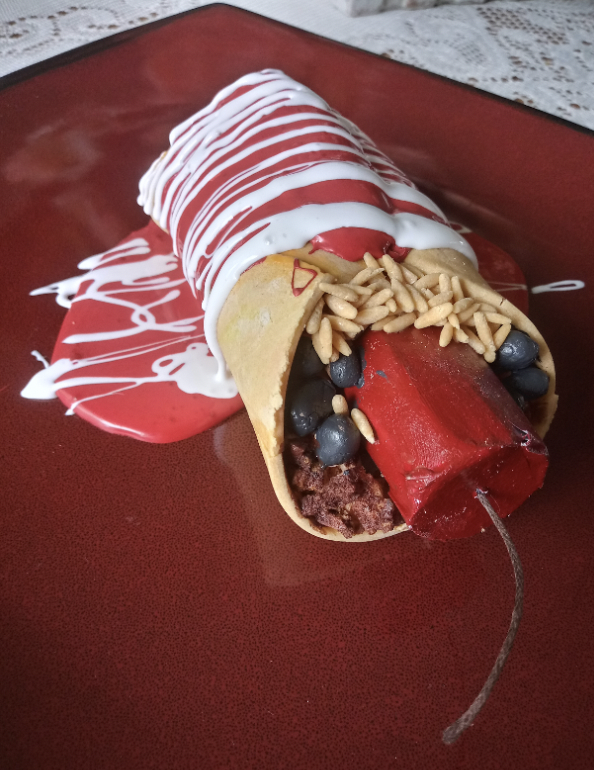
Professor Scott Whiddon shares the creative ways he and his Division of Fine Arts colleagues have taught remotely — and how they plan to incorporate what they’ve learned into how they teach.
Given the challenges of the global pandemic, you might have wondered how fine arts faculty were able to provide the substantive teaching and mentoring that defines the Transylvania University experience. To be sure, moving to online teaching was a challenge for faculty, as we value face-to-face conversations and in-person learning. While some students will physically attend classes this fall, we’re already integrating much of what we learned — about ourselves as well as our students — throughout this experience so far.
Liberally educated people — and arts-minded people in particular — are problem solvers, so arts professionals and educators are especially prepared to adapt to challenges via creativity and collaboration. Over the summer, I interviewed colleagues in music, theater, art and writing, rhetoric, and communication to learn how they translated their teaching skills into digital practices. What I found was nothing short of inspiring.
Things such as an online sculpture course might seem impossible, and yet students in professor Kurt Gohde’s Sculpture II class were able to develop and share work they started at the beginning of the term. In an online “quilting bee” of sorts, students used video tools in real time to enhance the artistic process: freezing images, zooming in for details and more. For a different class — this one focused on video production — Gohde had students create short, imagistic pieces that showed what their own shelter-in-place experiences were like. But perhaps what was more impressive than the artworks themselves was the way these students and faculty created and sustained a real community of art makers, despite physical distance.
In his fall photography course, Gohde will ask students to “create a large collection of images to document the people around us in their masks,” he said. “Though we have a cultural belief that we can see deeply into a person’s feelings through their eyes alone, we almost never have to do that. We do now.”
As with Gohde, art history professor Emily Goodman has adapted a student-centered teaching style to an online environment.

“I have come out of distance learning with a new appreciation for digitally native, multimodal projects as a potential replacement for the traditional research presentation,” said Goodman, co-director of Transylvania’s Digital Liberal Arts initiative. “While I still feel that condensing an argument and presenting it live, in real time, in front of an audience is an important skill, through our time doing remote instruction I have come to appreciate that there may be other communication skills that I can prioritize in my research-based courses. In particular, having my students make Adobe Spark GlideShows and websites and short videos in lieu of a traditional presentation ended up being way more successful and is something I intend to do in all of my courses this year.”
Also in her online instruction earlier this year, Goodman used virtual exhibitions and other, already existing online materials to help students see art history as something more than mere dates and names. She describes her work as the teaching of visual literacy; students take what they see in a range of art forms and then make careful, thoughtful assertions based on both their own knowledge and conversations by scholars. Such work helps students develop high-level critical thinking skills. I was particularly impressed with Goodman’s “social distancing meme” assignment, where students had to explore how classic works of art are incorporated into popular culture.
Chatting with theater faculty was one of the best parts of this interview project. Professor Tosha Fowler spoke at length on how she used this shift from in-person to online teaching to help students get experience in acting for the camera, incorporating video to help students think carefully about character development and revision. “In the past, on-camera acting exercises have gone to the chopping block as I have always thought that in-class experiences are more valuable,” she said. However, she was impressed with the on-camera work — “It has highlighted the importance of ensuring students develop a strong skillset to present themselves on camera. As we see our world change right in front of our eyes, the ability to set up a remote space and feel good about interacting virtually is extremely valuable.”

Fowler also invited theater professionals from across the U.S. to participate in Zoom chats with students as a way to keep classes energized and engaged.
In a similar manner, professor Daniel Bennett took up the challenge of teaching tech theater students, who might not have access to the tools typically used to build and design sets, by drawing upon his and their interests in popular culture. His students — supported by online chats with faculty and peers — took on assignments such as designing and building fake food props using materials from home. They also did humanitarian projects, such as safely reorganizing elementary school classroom spaces once the shutdown began. Each student documented the process and showcased their products with their phones. The theater program looks ahead to a variety of possible plans for the upcoming academic year, including digital and interactive performances, radio plays and original solo shows.

Going forward, Bennett plans to prerecord lectures for students. This will both challenge him to present information in a more efficient package and allow for more time in the classroom for discussion, debate, growth and creativity. “We have a unique opportunity to reshape the way the classroom is viewed at Transylvania moving forward,” he said.
As a working musician as well as a writer, I was particularly interested in how music faculty maintained their well-respected instruction. My chat with Tim Polashek, a music technology professor and the other co-director of our Digital Liberal Arts initiative, reminded me of the lengths our faculty will go to in order to support student learners. Polashek quickly saw which digital tools for mixing and production were available online; he also made sure the physical tools, such as mics and studio monitors, that students needed for projects were delivered to the homes of those who were working on senior-level projects and needed technological support.
Music faculty also used easily accessible digital tools to ensure students were part of a world-class learning experience, even if at a distance. Along the way, our digital liberal arts faculty, as well as information technology staff, were inspiring in how they responded to student needs. The joy Polashek and other music faculty bring to their teaching is nothing short of amazing — check out samples of music made by his students during this transition.
Of course, liberal education is hardly confined to classroom spaces, studios, galleries or theaters. Much of what Transylvania students do in terms of learning and growing is spent in community spaces, or in sharing their intellectual work with others — and none of this stopped during our spring transition to online spaces. For example, the writing, rhetoric, and communication program established seven new internship sites, all of which involve safe practices for student learners. Each of these incorporated writing for digital spaces, and many involved community outreach with groups such as Kentucky Refugee Ministries, the Classical Music Institute and Chamber Orchestra of San Antonio, and Cincinnati Magazine. Also, right at semester’s end, WRC major Emma Masur ’20 was a featured keynote speaker at the online Pedagogicon Conference, a gathering of over 400 educators from across disciplines, all talking about teaching. Her work was incredibly well received by peers and scholars alike; now she’s headed off to get her MA this fall on a full scholarship.
Despite the challenges of having to move to an all-online space so quickly back in March, I was amazed at the creative spirit and tenacity of Transylvania students. My story about Emma shows that even in challenging situations, students at our institution can find success on the national stage. Transy students are writers and researchers; they’re creative thinkers and project designers. They’re able to think within and across disciplines in order to share their ideas with the larger world.
We look forward to working with students, staffers and fellow faculty members in meeting the challenges of the upcoming year.
About the author: Scott Whiddon wears many hats at Transylvania. He is a professor and program director of writing, rhetoric and communication and director of the university’s Writing Center.

